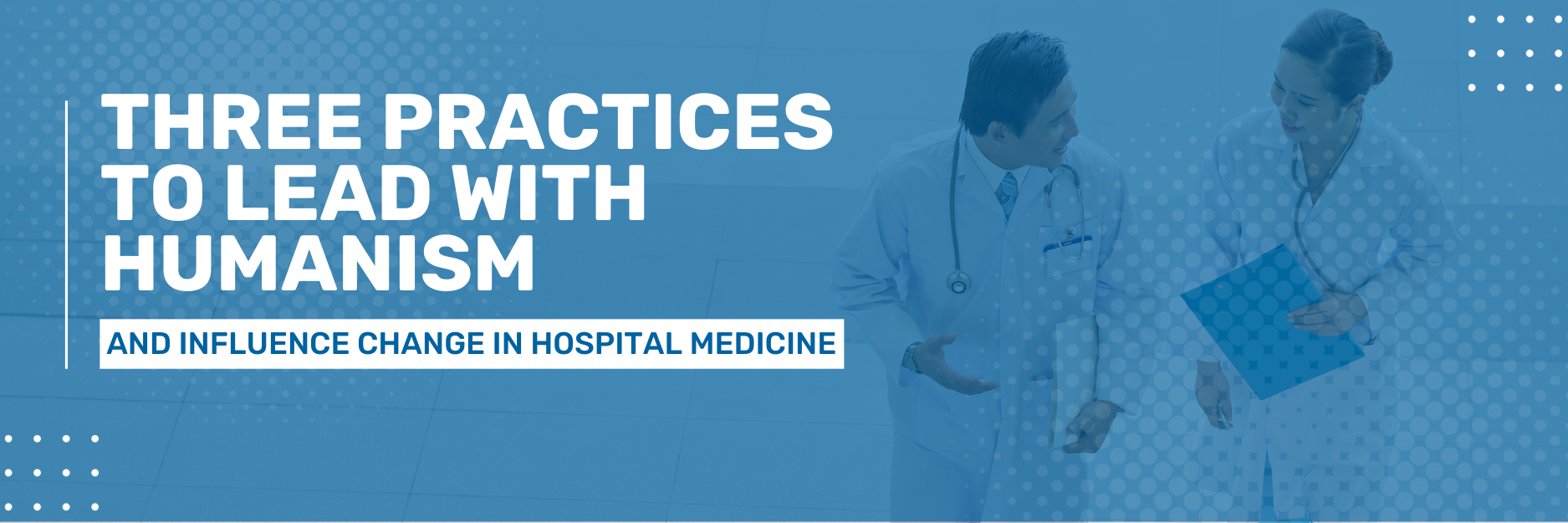“Empathy, patience, and active listening should be taught in hospital leadership training, and practiced daily by leaders,” says Rachel Thompson, who will begin as Core Clinical Partner’s Chief Medical Officer at the start of 2024 and Immediate Past President of the Society for Hospital Medicine. As shared in a recent Q&A with Dr. Thompson, a national leader and expert in Hospital Medicine: most of the challenges in Hospital Medicine (HM) boil down to human challenges. The practices are peripheral in medical training, but Dr. Thompson asserts they are essential for developing humanistic hospital leaders who can effectively influence change.
Because humanistic leaders focus on people, they are often changemakers. Their leadership style promotes trust and confidence among employees, consequently increasing receptiveness to change and transition. This attribute is necessary in the uncertain world of HM, where leaders grapple with exhausted employees, competing priorities and personalities, and frequent disruption.
Humanistic leadership is not always intuitive; however, it can be viewed as a skill that is learned, much like clinical competencies. Dr. Thompson explains that incorporating this topic into clinical and operational leadership training not only shapes people-focused leaders but also helps these individuals to facilitate change.
Here are three practices she believes are essential for doing so:
- Patience: Exhibiting patience is acceptance that change takes time, Dr. Thompson says. Patient leaders recognize their vision may not be readily received and, as a result, are dedicated to educating their team, formulating thoughtful responses to concerns, and improving comfortability with transition.
This skill is valuable in HM where clinicians may resist adjustments to workflows. Exercising patience in these scenarios encourages leaders to articulate their reasoning and goal for improvement before implementing sudden changes. It also acknowledges that transformation is usually disruptive and offers employees time and space to adapt.
“When I see possibility for an improved outcome, I want to jump right to the finish,” says Dr. Thompson. “By practicing patience, I’ve developed an appreciation for my colleagues who are more methodical – and frankly, they often come back with amazing ideas I would have missed if it weren’t for patience.”
- Active Listening: According to Dr. Thompson, active listening is pivotal to reconciling conflicting opinions and cultivating mutual respect. This is because active listening improves communication by allowing one party to feel their message matters and the other to fully absorb the information being shared.
Common techniques include preparing to listen, avoiding interruption, making eye contact, paraphrasing the message, and asking questions. These tactics demonstrate comprehension, invite the speaker to express their thoughts and feelings, and encourage participation in problem-solving.
In the hospital, active listening can help HM leaders identify where and when their team needs support, especially when managing high patient volumes and working within time constraints. This practice empowers people to be open and honest, which provides leaders with insight needed to formulate collaborative, human-centered solutions, Dr. Thompson comments.
- Empathy: Empathy is often heralded as the cornerstone of patient care. However, it has a crucial role beyond clinical interactions. “A dedication to empathy and understanding not only elevates the quality of patient care but also fosters better working relationships and collaboration,” explains Dr. Thompson.
Leaders who display empathy are committed to understanding others’ viewpoints. This skill has become increasingly important in hospital management where burnout and fatigue are high, and clinicians look to leaders to share in their distress and frustration. “Given the current climate, empathy goes a long way in letting my team know we are in it together,” Dr. Thompson says. Additionally, employees are more likely to embrace transformation if their ideas are met with empathy, and their perspective is used to foster solutions.
She notes it’s necessary to practice empathy with intention and does so by reminding herself that everyone has a unique story, even if she doesn’t relate to or understand someone’s thinking. The exercise helps me to pause and keep myself from going into judgement mode, says the Core CMO.
Given persistent change and challenges in HM, health leaders must be equipped to put patience, active listening, and empathy into practice to support and guide their teams. Evolving leadership training to incorporate clinical education and strategies for nurturing human relationships can create what Dr. Thompson describes as “a setting where people… understand that they are key to the success of the whole organization.”


